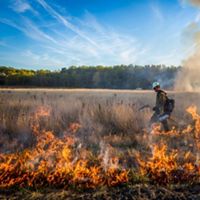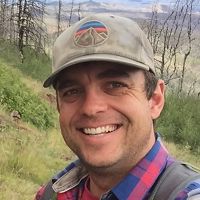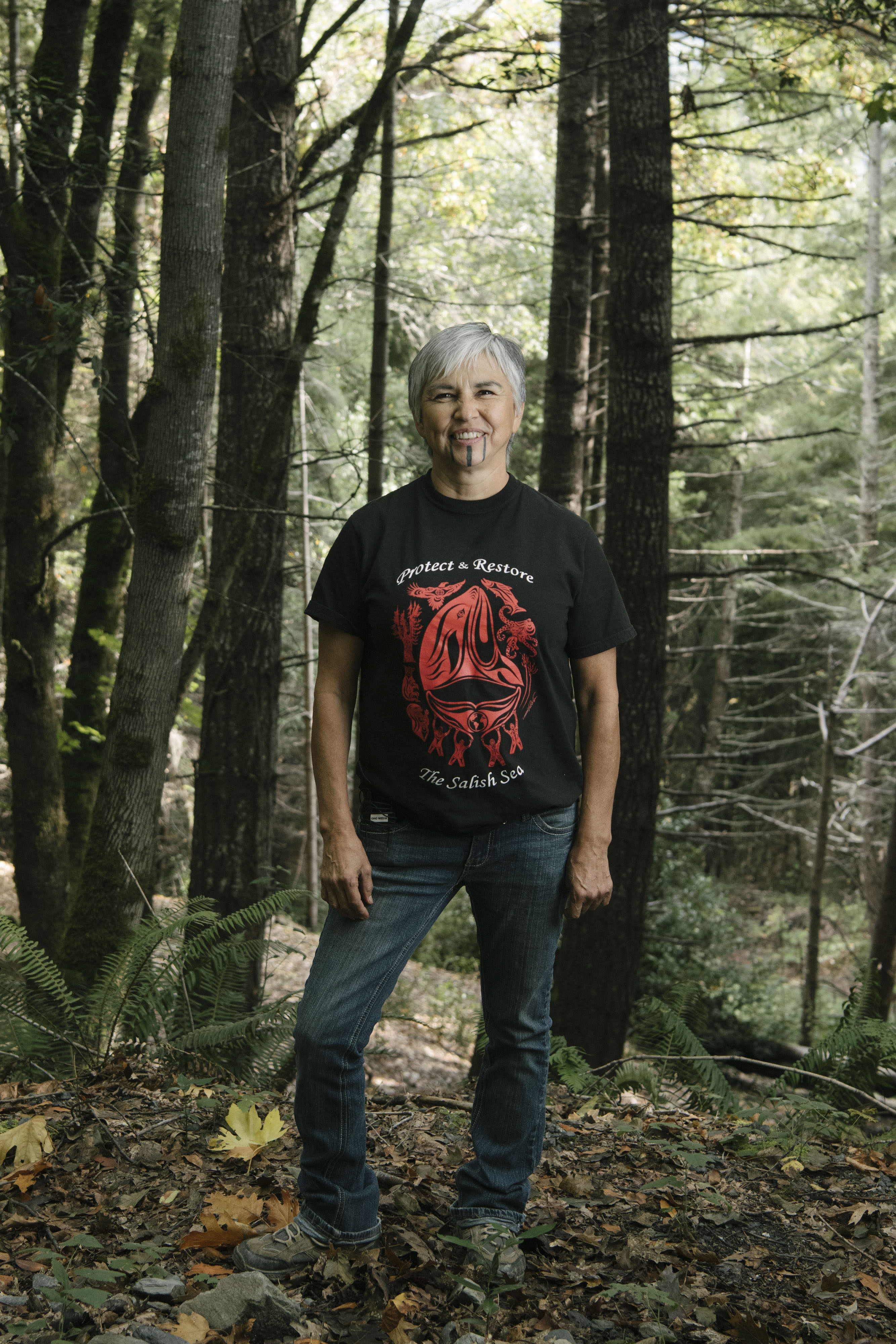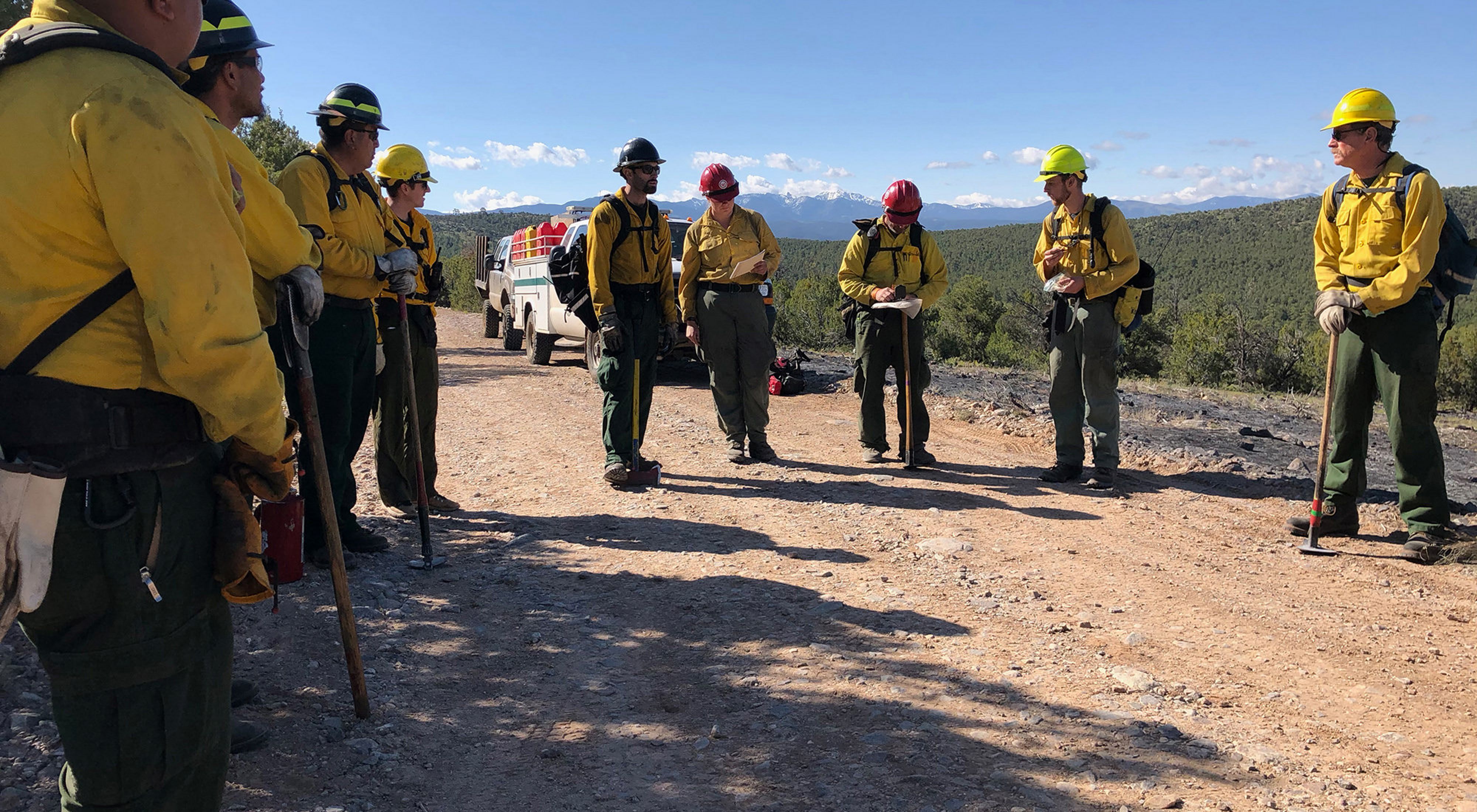Years of fire suppression and lack of beneficial fire, combined with climate change, have created a crisis for people and nature across North America. Addressing our nation’s fire issues will help restore forests, ensure water quality, build resilience to climate change, enhance wildlife habitat and biodiversity and support outdoor recreation.
But the clock is ticking. To keep communities and nature healthy, we must co-exist with fire. Success will require a dramatically different approach, including a substantial increase in controlled burns and support for communities in adapting to their fire-prone environments.
Today, federal and state governments largely “own” fire. Most landowners and tribes that would like to use fire are prevented by legal and regulatory hurdles. And local communities have little say in how nearby wildfires are managed–let alone how prescribed fire is used. As the world’s leading nonprofit organization working on fire issues, The Nature Conservancy is partnering with government agencies, Indigenous peoples and community leaders and others to bring the role of fire in nature back into balance and help communities prepare for, manage and live safely with fire.
Indigenous Peoples and local communities have ecological wisdom deeply embedded within their cultures, enduring connections to place and strong commitments to protecting their lands and waters for future generations. However, the expansion of colonialism, forced resettlement, strong external development pressures and a rapidly changing climate have degraded traditional lands and disrupted communities’ sustainable ways of environmental management.
-

TNC's Living with Fire
TNC's Living with Fire program is focused on changing our relationship with fire to create healthy natural places and build resilient communities in the face of a warmer, drier climate. Learn More
To listen and learn from this wisdom, The Nature Conservancy in New Mexico has hosted panel events sponsored by the Taos Ski Valley Foundation.
America's Fire Fix
On May 4, TNC hosted a media town hall event called America's Fire Fix, sponsored by the Taos Ski Valley Foundation, featuring some of the country’s top fire experts who showcased solutions designed to increase the scale and scope of restoration across the country. The event was moderated by Marek Smith, director of The Nature Conservancy’s North America Fire program and panelists included:
- Annie Schmidt, program specialist, Fire Adapted Communities Learning Network
- Kelly Martin, former chief of fire and aviation, Yosemite National Park, and
- Elizabeth Azzuz, Yurok tribe member and secretary of the Cultural Fire Management Council.
The panel discussion and Q&A with reporters was followed up with solutions-focused breakout sessions, led by more top fire experts who dove into the following topics:
- Indigenous Peoples Burning Network
- Rio Grande Water Fund in New Mexico
- Community-scale Planning and Education, and
- Coordinated Burn Planning Across the U.S.
Panel Discussion
What follows is a sampling of questions and answers from the live panel discussion, hosted on May 4, 2021:

Marek Smith: Annie, how can communities change their fire future? Can you give us a couple examples of communities that are adapting to live with fire better?
Annie Schmidt: The Fire Adapted Communities Learning Network is empowering local leaders to support the development of tools and resources and connect people together to increase wildland fire resilience. Fire resilience is really driven by local action, local people local places. Communities are all different and need an assortment of different tools. Some are focusing on home hardening and defensible space programs such as the Firewise USA® recognition program, while others focus on evacuation planning.
Some work on large, landscape-scale collaboration and others work hard to pass wildland urban interface codes. These different approaches and tools mean that communities can take the action that’s most relevant and effective in their place.
New Jersey Fire Safety Council (NJFSC) is working hard to change its fire outcomes, particularly for those who live in or near the 1.1M Pine Barrens in southern New Jersey. Because of an innovative partnership between multiple entities, municipalities in New Jersey can be recognized for their resilience actions and access funding to grant programs. NJFSC was also instrumental in the passage of New Jersey’s Prescribed Burn Act.
Ashland, Oregon is another example of a community that’s changing their fire future. Ashland Fire and Rescue has worked extensively to prepare their community from smoke impacts. Together with partners from business, health, local and state government, they’ve been helping to develop and implement a community HEPA filtration program, ensuring the residents are prepared for the impacts of wildfire smoke.
Both examples show these communities are learning from and sharing with others throughout the nation.

Marek Smith: Kelly, based on what Annie said, we need a workforce to engage in community wildfire protection. Talk about the culture of fire management and practitioners and why it needs to change.
Kelly Martin: The best example is to visualize efforts on the local level, regional, state and finally on the national level. It takes a lot of people on the local level to help the public understand why putting good fire back on the landscape, implementing prescribed burns and accepting some smoke as a tradeoff is so important. We’ve been suppressing fire from the landscape for over 100 years, so it really takes a local effort for people to understand.
The programs within the Fire Adapted Communities Learning Network and The Nature Conservancy are important for educating the public. But this is also about the media. We need people speaking up and supporting these efforts to protect and support the resiliency of communities and natural landscapes that we value so much.

Marek Smith: Elizabeth, speaking of building capacity, let’s talk about Indigenous burning. Why is it critical to communities?
Elizabeth Azzuz: Our community has been fire adapted since time immemorial. Our community works with each other, we hire local people and build capacity by working with Cal Fire and Humboldt Area Foundation. These groups realize that what we’re trying to do is extremely important and they’re wonderful about providing resources for us to do that.
Cultural Fire Management Council (CFMC) started out as an initiative for building healthy communities. They came to our environment and asked what we needed. And out of everything, without a store or hospital, over 250 people in the community said they wanted fire back on the ground. CFMC set out to accommodate our elders, who needed their basket materials, traditional foods and traditional medicine, and in order to do that we had to put fire back on the ground to restore our environment.
It’s been great working with the organizations that have come forward, like Cal Fire, Humboldt Area Foundation, The Nature Conservancy, US Forest Service and the Fire Learning Network. If we didn’t create these partnerships, we would not be able to create jobs, restore our environment and provide everything that our elders have asked for.
Meet the Experts
Deep-dive Solution Experts
-

Mary Huffman
Mary is director of the Indigenous Peoples Burning Network. Focus: Managing a support network among Native American communities that are revitalizing their traditional fire practices in a contemporary context.
-

Collin Haffey
Collin is the forest and watershed health manager for TNC in New Mexico. Focus: Rio Grande Water Fund, protecting the water supply for half the State of New Mexico through forest restoration activities, which have already prevented 4 severe fires.
-
Rose Shriner
Rose is project manager for the Tapash Sustainable Forest Collaborative and coordinator for the Kittitas Fire Adapted Communities Coalition. Focus: Community-scale planning and education as well as aligned local fire planning.
-

Lenya Quinn-Davidson
Lenya is fire advisor for the Univ. of California Cooperative Extension. Focus: Coordinated burn planning across the country, which is critical in terms of controlling the effects of fire to maximize benefits for people and nature.
Revitalizing Cultural Burning Practices
In June, The Nature Conservancy in New Mexico hosted a virtual event called Revitalizing Cultural Burning Practices, New Mexico and Beyond. The event focused on the long-standing relationship between American Indian cultures – specifically, fire and efforts to revitalize traditional cultures in today's context. Speakers discussed what cultural burning and fire means to them as well as challenges related to fire faced by their communities.
This event, sponsored by the Taos Ski Valley Foundation, was moderated by Lindsey Quam, deputy director of forests/tribal liaison for the New Mexico Forestry Division in Santa Fe. Panelists included:
- Margo Robbins, executive director of the Cultural Fire Management Council and co-founder and co-lead of the Indigenous People’s Burn Network and
- Rene Romero, fuels coordinator for the Division of Natural Resources at Taos Pueblo.
Panel Discussion
What follows is a sampling of questions and answers from the live panel discussion, hosted on June 2021:

Lindsey Quam: Margo, what led to a decrease in burning across your ancestral landscape?
Margo Robbins: That's a startling story to tell and it makes me cringe to have to share the history. Back in the late 1800s early 1900s, colonizers would shoot Native people for burning the land, for taking care of the land with fire. And that was an effective way of stopping us from burning. I don't know if it was part of the genocidal effort, which is what we experienced, or it was perhaps by accident that they purposely took fire from us.
Fire is one of the things that that makes us who we are as Native people. After a period of time, they stopped shooting us but there were laws put in place that would imprison us for trying to use fire and those laws exists to this day.
We’ve had to learn how to work with these laws and policies that govern the use of fire. The laws that are in place now were put into place due to a few things. First was the fear of fire. Non-native people who came to this land didn't understand that fire is supposed to be a natural part of ecosystems. The land that they saw when they arrived was not that way by chance. Native people created that landscape by using fire and we tended the land, using fire.
The hands-off mindset that the non-native people used as a way to manage land, to preserve the wilderness areas free from people, one where humans aren’t allowed to pick anything, is very misleading. It has led to this landscape that we're encountering today and these wildfires that are so out of control. And so, I would have to say that the fear of fire and not understanding what this land needs to be healthy were the driving factors of decrease of burning in our territories here in the United States.
Lindsey: Thank you for that answer Margot. I really think the historical trauma that came about and the actions done, not only to your people, but a lot of other people helped perpetuate the fear of fire, which led to not using fire and not having it as a part of the landscape anymore.
I'm really sad to hear that was the case but also glad that you brought it up openly because I think that's what a lot of tribal people faced and probably still due to some extent, as there are mechanisms in place to make it a lot harder.
How has the absence of fire impacted the wildlife, lands and waters that are a part of your homeland?
Margo: Our forests are so out of balance from what they once were. At one time, our land was about 50% prairie and now they are 3% of what they once were. The brush is so big that you can hardly walk through the forest. And when you can’t walk through the forest, neither can other big animals, so it's been detrimental to the habitat of the larger animals.
At one time, we had a lot of elk on our on our homeland, and we use those elk for blankets, clothing and drums. We use porcupine quills in our baskets and as a halo in the world renewal ceremony and we don't have access to porcupines anymore. Another very important bird is the pileated woodpecker.
My whole life I went without even seeing a pileated woodpecker on our reservation, until we started burning. After our first burn somebody saw three woodpeckers. Somebody else saw a flying squirrel…we didn't even know we had flying squirrels! So, the absence of fire has been really critical in reducing the species that are available, which affects not only our food sources but our ability to continue to create ceremonial items, as well as basketry.
The frames of our baskets are Hazel and if Hazel doesn’t have fire, it will not reproduce straight shoots. The art of basket weaving was dying out. You seldom saw a baby carried in the basket. We use baskets for so many things. We cook with them, we catch eels with them, we wear them in ceremony.
This was one of the driving forces for us to bring fire back to the land. Not only do we need to have our basket materials available, and our traditional food sources, but also, we lived in a tinderbox with one road leading on to and off of the reservation. The absence of fire created a severely high risk of wildfire in our homelands and depleted our cultural resources.
Lindsey: Margo, why is bringing back/increasing cultural burning important to your communities?
Margo: Our community, like many communities, suffers from many different social maladies including drugs and alcohol. And I think that has a lot to do with people losing their identity of who we are and who we’re supposed to be as Indian people. I think that getting young people involved with fire and bringing them out on the land is critically important. Fire can reconnect us to the spirits of the land.
It’s hard to get young people's attention, they're so caught up in social media, but when they get out there, they don't care about their phones. Fire mesmerizes you, and it draws you in.
We started down this road to reclaiming our right to use fire for two reasons. One was that we needed basket weaving materials, and two, we were afraid that there would be a wildfire our elders wouldn't be able to escape. But as we continued down this path, we came to realize that the health of the land is synonymous with the health of the people. Fire has the ability to restore the land to health, which means restoration of the people. When we are able to reclaim more parts of our traditional life ways, we strengthen our identity of who we are.
There's something about sitting down to a meal of dear and acorns, eating the traditional foods of our people. It's not just physical sustenance, it feeds your spirit. It feeds your soul. There's something about sitting down and weaving a basket that soothes your spirit.
The more that we can reclaim and pass on to our next generations these pieces of our identity, the stronger and healthier we're going to be as a people. And that's important. Not only to us as human beings, but also to the plant and animal people as well.
Lindsey Quam: Rene, how did you learn about the role of fire in your homeland of Taos Pueblo?
Rene Romero: Taos Pueblo has a rich history of firefighting. In the early 1950s Southwestern firefighters became a dominant force and, in some realms, people considered them to be the earliest Hot Shot Crews. They were a strong people use to working the land.
My grandfather told me stories of fires, about going down to Capitan, New Mexico in the 1950s to fight a forest fire where they found Smokey Bear. And yet, that story was never portrayed that way publicly and instead a non-native crew was credited. Smokey became a symbol.
That lead to my first fire, a 1-acre fire. I remember running up the hill to attack it and I felt fear. We've been driven for too long by fear of fire. The farther along that I got into fire I learned to respect fire and not fear it in the same way because I realized there was so much good that was happening, but we didn’t embrace that part of it. So, that's my introduction to fire and it was a kinship that was born very early as I was raised at Taos Pueblo.
Lindsey: Thank you Rene, and just an interesting fact is that the New Mexico Forestry Division manages and operates the Smokey Bear Park and Museum where Smokey Bear is buried. In our teachings, we pay homage to the Taos Snowballers, who were originally uncredited as the first to discover the cub that eventually became Smokey Bear.
How has the absence of fire impacted the wildlife, lands and waters that are a part of your homeland?
Rene: I’ll start with waters. I used to think that the spine of the Rocky Mountains was the backbone of the western United States leading all the way up to Alaska. But flying around with a plane and a parachute on my back, I realized the Rocky’s weren’t the spine. The backbone is the rivers, big rivers, every single feeding stream and creek.
And now we have a situation at home where there’s build-up of fuel and it’s ready to burn. It will impact Taos Pueblo, a World Heritage Site. We're stuck trying to rectify issues that have been brought upon us and yet we can't. I have struggled for years to try to figure out how to work in the system. Using the term “cultural burn” takes the responsibility out of the Bureau of Indian Affairs hands, as it’s a local concern, and our priority.
Everything is connected. And yet we as humans think that we can dam rivers, that we’re more important than anyone else. I bring you back to this statement: Nature has been taking care of us for tens of thousands of years, yet we don't seem to remember. What are we presenting for the future? We can't just live in the past. We have to think about the future, our children's.
Lindsey: I totally agree. And I think that we get hung up on the fact that we're living in litigious society nowadays. Everybody's wanting to make a fast buck, pointing the finger and assigning blame. And that makes us afraid of our own shadow and even as tribal people we tend to start moving in that direction and forget about nature and who provides for us.
We start moving away from remembering our past, because we're afraid of the ramifications in the “white world.” We put our actions and thoughts towards that fear and not where they should be, and this is part of the reason why we're in this situation.
We should be looking at fire as an essential tool, not only as a part of our culture but as a people, that can help us manage the way in which we have been taught with the lessons that our ancestors left us with.
Watch the Webinars
- Watch the complete America's Fire Fix panel presentation
- Watch the complete Revitalizing Cultural Burning Practices presentation
Please contact Tracey Stone with any questions. Thank you to the Taos Ski Valley Foundation for supporting this event.


